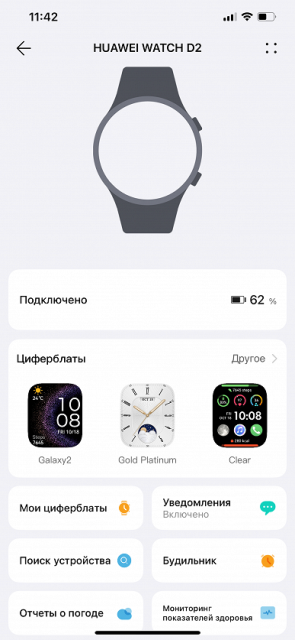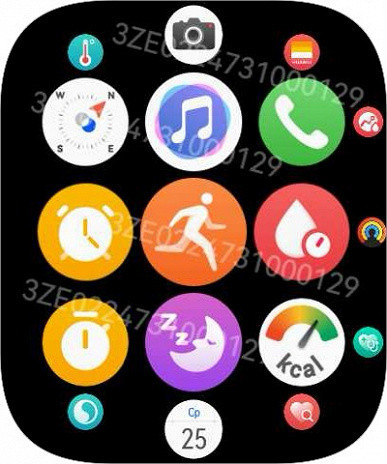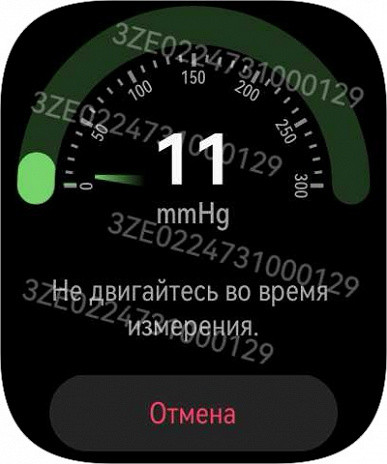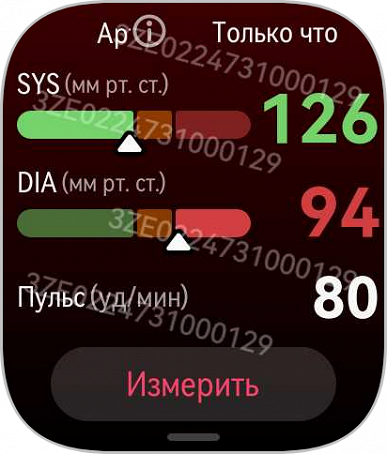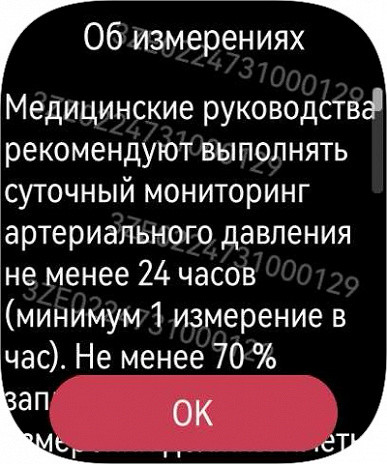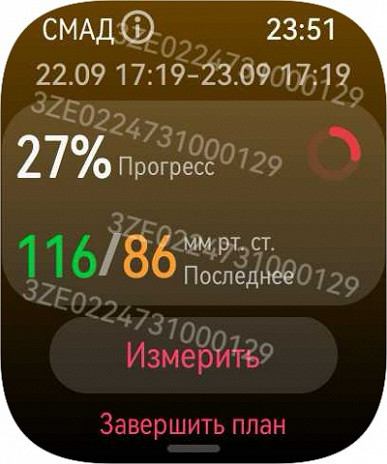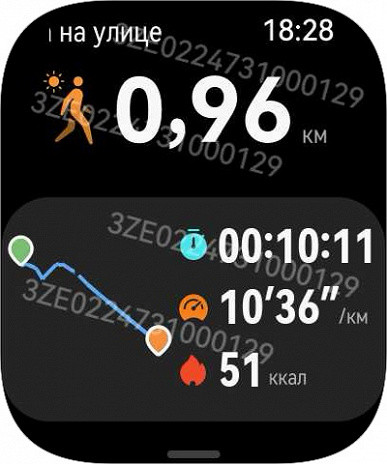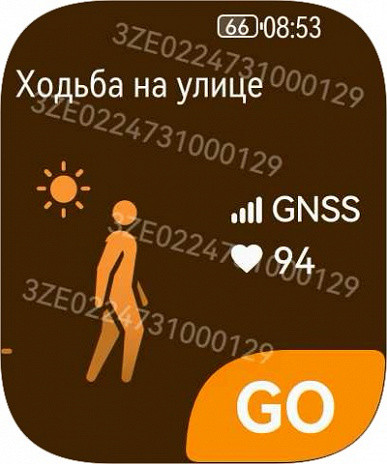Two years ago, we tested the Huawei Watch D smartwatch, which was then a unique product on the market, and during all this time, competitors have not offered anything similar. The Watch D's special feature is the ability to measure blood pressure not using algorithms, which often only give approximate results, but using a mechanism that is as close as possible to a medical tonometer with a cuff. Now the manufacturer has released an updated version of the device, preserving and improving its key function. iXBT.com was one of the first to test this new product.
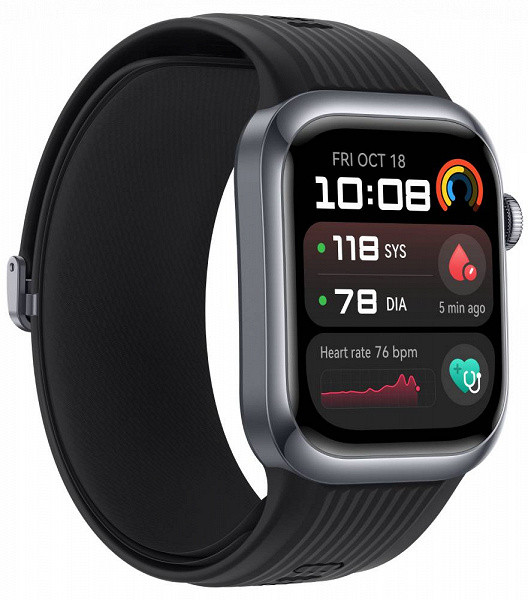
The watch is available in two versions: with a dark silver case and a black silicone strap, as well as with a gold case and a white leather strap. However, the color does not affect either the technical specifications or the price of the device, which is $270.
Meanwhile, the previous version of Huawei Watch D is still sold in a number of stores at a price of $243. A logical question arises: is it worth overpaying for the new model, especially after the seasonal discounts end in November? We decided to compare the characteristics of both versions. We did not include the characteristics of competitors, since there are simply no direct analogues on the market. These watches are chosen exclusively for measuring pressure, and other models will not be considered in this case.
| Huawei Watch D2 | Huawei Watch D | |
|---|---|---|
| Screen | rectangular, AMOLED, 1.82″, 480×408 (347 ppi), with AlwaysOn function | rectangular, AMOLED, 1.64″, 456×280 (326 ppi), with AlwaysOn function |
| Body material | aluminum alloy | aluminum alloy |
| Sensors | Blood pressure monitor with automatic measurement function, accelerometer, gyroscope, optical heart rate sensor, ambient light sensor, ECG measurement sensor, automatically working pulse oximeter (SpO2), temperature sensor, barometer, Hall sensor | tonometer, accelerometer, gyroscope, optical heart rate sensor, ambient light sensor, ECG measurement sensor, automatically operating pulse oximeter (SpO2), temperature sensor, Hall sensor |
| SoC (CPU) | not reported | not reported |
| Connection | Bluetooth 5.2, NFC for Huawei Pay, GPS (not stated) | Bluetooth 5.1, NFC for Huawei Pay, GPS |
| Microphone / Speaker | there is / there are | no no |
| Protection | IP68 | IP68 |
| operating system | HarmonyOS 5.0 | HarmonyOS 2.1 |
| Compatibility | Huawei smartphones, smartphones on Android 8+ and iOS 13+ | Huawei smartphones, smartphones on Android 6+ and iOS 12+ |
| Installing third-party applications | There is | No |
| Battery (mAh) | not reported | not reported |
| Built-in storage capacity | not available to user | not available to user |
| Dimensions (mm) | 48×38×13.3 | 51×38×13,6 |
| Weight without strap (g) | 40 | 61 |
The screen has become larger, the image is sharper, a barometer has been added, the ability to install third-party applications has appeared, and the operating system has been updated by three versions at once. At the same time, the watch has become lighter and a little more compact. Now it is equipped with a microphone and a speaker. In general, there are many changes. Let's figure out how it all works, and, most importantly, how the main function has improved — measuring pressure.
Packaging and assembly
Like the previous model, the watch comes in a massive white cubic box.
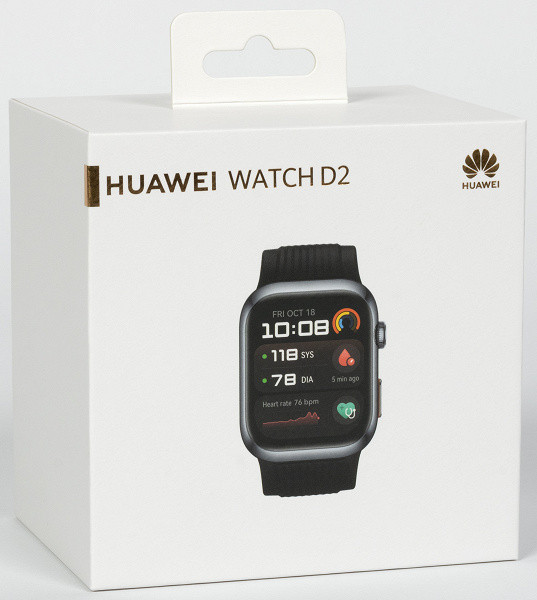
The package remains the same as the previous Huawei Watch D, but differs significantly from the standard set for smart watches. The most important element is the two cuffs: one is already attached to the watch, and the second is separate. Also included is an additional half of the strap of a different length and a paper template for measurements, which helps to choose the right cuff. In the box, you can find a small booklet with warranty conditions, a user manual in the form of a fold-out leaflet, a separate instruction with explanations on how to properly attach the cuff to the strap and watch (the process is not the most obvious), as well as a wireless charger with a USB-A cable. The charger is identical to that used in the previous model and other smart watches from the manufacturer.
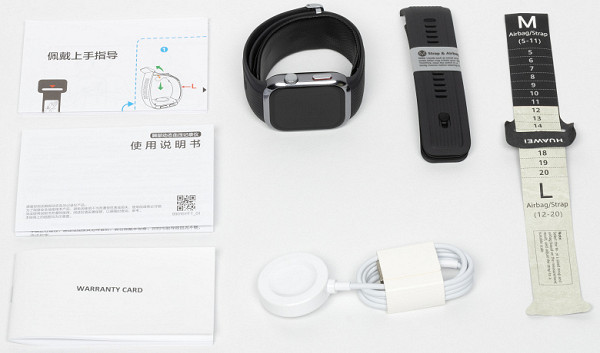
We talked about how to use the hand thickness meter in the Huawei Watch D review. The principle has not changed, as has the mechanism of operation.
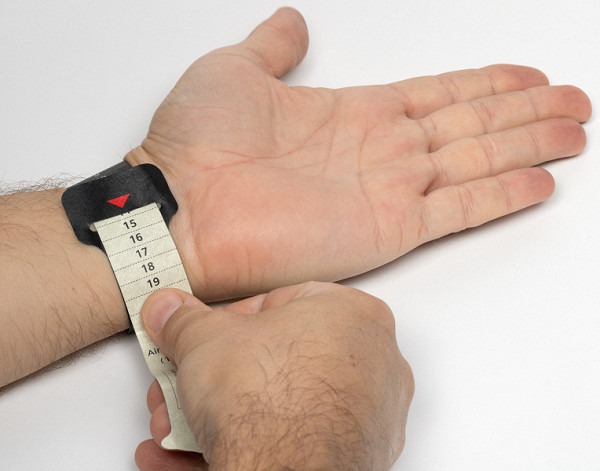
The cuff is attached to the strap with silicone rivet buttons, and at the base, closer to the watch case, it is securely fixed with a metal rivet on two small screws. The entire structure is attached to the watch with two steel pins, next to which is a miniature pump tube. Air is supplied to the cuff through this tube, coming from holes in the watch case.
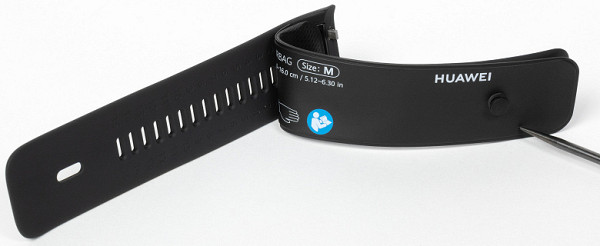
There are two lengths of the strap and cuff: M and L. However, M is suitable even for a very thin wrist. Theoretically, you can wear L on a thin hand, but the measurement results may be incorrect, since the cuff will not be able to inflate properly.
Interestingly, when you measure your blood pressure for the first time, you need to manually specify which cuff is used. If the choice is incorrect, the watch will recognize the error and offer to choose another option. The question arises: why can't the device automatically determine the cuff size if it already knows how to do this?
Design
The design of the device has changed significantly compared to the 2022 model. The first generation Huawei Watch D had a rather specific appearance. Although the unique function of the watch justified many compromises, many still wanted to wear a more stylish accessory. In the second generation, the manufacturer took this wish into account, and the watch began to look much more elegant.
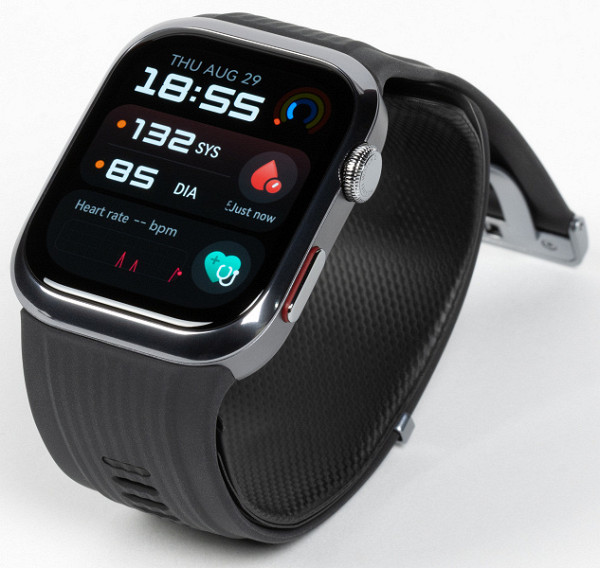
A silver metal frame around the enlarged display with a minimal frame, 2.5D curved glass at the edges and two metal buttons (one of which is designed in the form of a wheel) give the watch a stylish and versatile look.
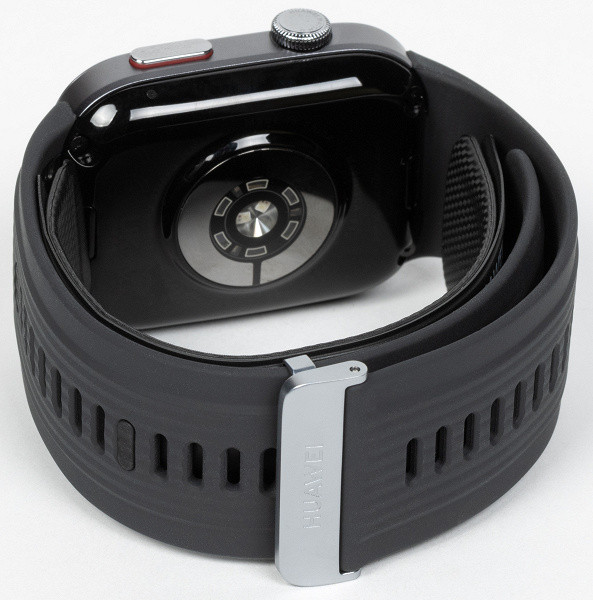
If you don't know that this is not just a smart watch, but actually a full-fledged medical device (although it is not officially declared as such), then you would not suspect it from the outside. The watch case is not too thick and is quite comparable to regular models.

It is important to note that the top button now has a scroll function, allowing you to not only press it, but also rotate it, like on other Huawei smartwatches. It is also worth paying attention to the engraving: it is almost impossible to see it with the naked eye, and especially difficult to notice it from the side. Nevertheless, such attention to detail by the manufacturer makes the device even more valuable and pleasant to use.

The second button, oblong in shape, is programmable. By default, it starts measuring blood pressure (unlike other Huawei watches, where this button activates workouts), but it can be reconfigured to perform other tasks. In addition, you need to put your finger on this button to measure the ECG, which adds important functionality.
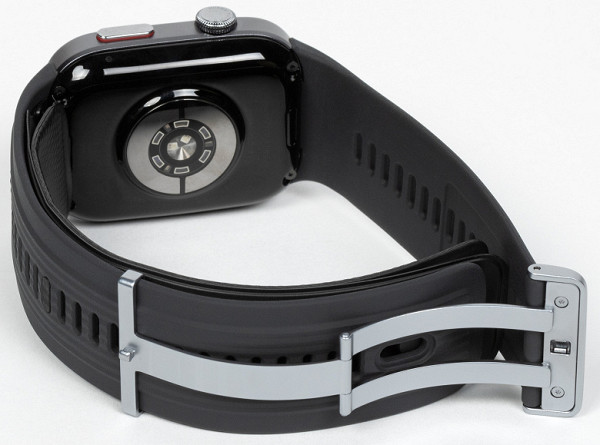
The other side of the device lacks buttons and slots, but has a few holes. In the Huawei Watch D review, we mentioned that these holes were for air intake, since there was no microphone or speaker. Now, with the addition of a microphone and speaker (which is a significant step forward), the number of holes has increased. It is worth noting that the sound quality during phone calls is quite good, and the volume can be adjusted using the wheel.
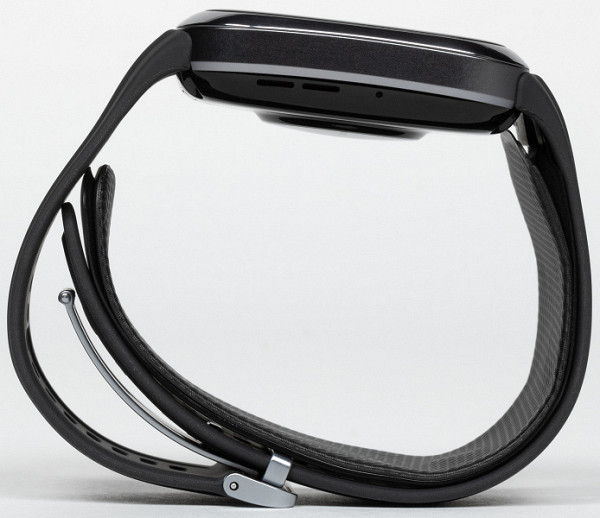
As for the strap, it is still wide and flexible, made of soft silicone and equipped with a steel butterfly clasp for secure fixation. We should mention that we did not feel any discomfort due to the cuff under the strap.
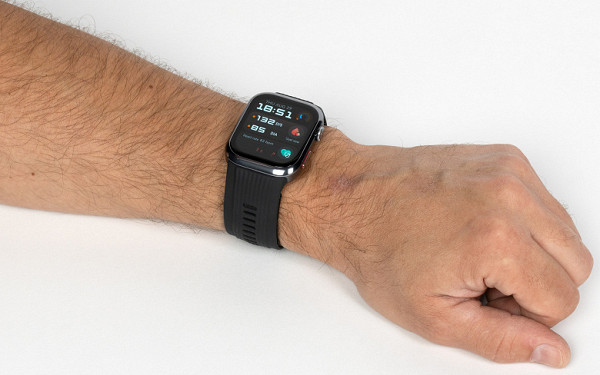
Probably the only drawback of this watch in everyday use compared to other models of the manufacturer is the lack of reliable water protection. The device is protected from splashes and short-term contact with water (for example, during rain or accidental exposure to running water while washing your hands), but you can’t swim in it. This is understandable: it is impossible to simultaneously provide protection from water and pump air into the cuff. The laws of physics have not been canceled. Otherwise, the design deserves only praise. The improvements compared to the first generation are significant both in terms of style and in terms of new functions, such as the presence of a microphone and speaker.
Screen
The watch is available in one screen size — 1.82 inches. The resolution is 480×408 pixels, which corresponds to 347 dpi and is an improvement over the previous generation. The display has a rectangular shape.
We conducted a detailed analysis of the screen using measuring devices. Below is the conclusion of Alexey Kudryavtsev.
The front surface of the screen is made of a glass plate with a smooth mirror coating that is resistant to scratches. Judging by the reflection of objects, the anti-glare characteristics are slightly better than those of the Google Nexus 7 (2013) screen. The doubling of the reflection is minimal, which indicates that there is no air gap between the layers of the screen. The outer surface of the screen has good oleophobic properties (better than Nexus 7), due to which fingerprints are easier to remove and appear more slowly than on ordinary glass. The maximum brightness, measured in flashlight mode, is 520 cd/m². Given the excellent antiglare characteristics, such brightness allows you to clearly distinguish the image on the screen even in bright sunlight. There is also an automatic brightness adjustment function, the operation of which can be customized. According to subjective observations, this function functions adequately.
The graph reflecting the dependence of brightness on time shows significant modulation with a frequency of 120 Hz. When the watch moves quickly relative to the eyes, a stroboscopic effect may occur on some images. However, in normal use, flickering is not noticeable, since the duty cycle is low and the modulation phase varies across the screen area. The following figure shows the dependences of brightness (vertically) on time (horizontally) for the maximum brightness value.

This screen uses an OLED matrix based on active organic light-emitting diode technology. The full-color image is formed by subpixels of three primary colors — red ®, green (G) and blue (B), which are presented in equal quantities, as can be seen in the microphotograph fragment:

The spectra are typical for OLEDs — the primary color regions are well separated and appear as relatively narrow peaks:
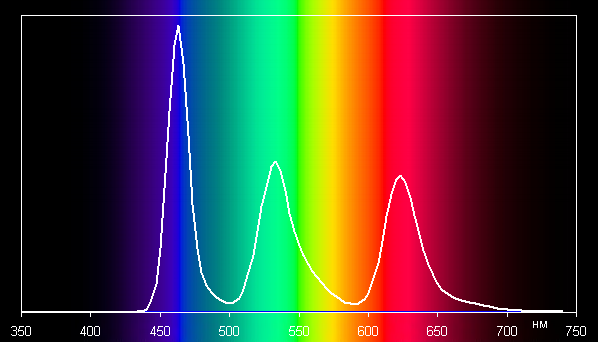
The white field color temperature is approximately 8300 K, and the deviation from the spectrum of an absolutely black body (ΔE) is about 4 units, which indicates an acceptable color balance. Black looks really black at any viewing angle, so saturated that the contrast parameter is meaningless in this case. When looking straight on, the white field uniformity is excellent. The screen offers excellent viewing angles, with significantly less brightness loss when looking at an angle compared to LCD screens, although at significant angles the white color acquires a slight bluish tint. Overall, the screen quality is at a high level.
Functionality and Features
Like all previous Huawei watch models, this version runs on the HarmonyOS operating system (current version 5.0) and requires the Huawei Health app to be installed on your smartphone. The watch is compatible with smartphones running HarmonyOS, Android, and iOS.
We've already discussed the Huawei Health app several times, so in this review we'll focus on the unique hardware and software features of this particular watch.
Like all previous Huawei watch models, this version runs on the HarmonyOS operating system (current version 5.0) and requires the Huawei Health app to be installed on your smartphone. The watch is compatible with smartphones running HarmonyOS, Android, and iOS.
We've already discussed the Huawei Health app several times, so in this review we'll focus on the unique hardware and software features of this particular watch.
Since we have already tested all these functions on other models and have not found any differences in their implementation (which we have confirmed), we will not go into their description and focus on the main thing: measuring blood pressure. The general principle has remained the same since the release of Huawei Watch D. The arm must be raised to chest level, but not pressed to it. After this, the cuff will begin to fill with air and squeeze the wrist. The compression will be quite noticeable, and at some point you will be able to clearly feel the pulse. The measurement time is about half a minute.
As before, the measurement error is ±3 mm Hg, which corresponds to conventional medical tonometers. In principle, you can use the watch as a medical device, provided that the cuff and strap thickness are selected correctly. However, simple household tonometers are not able to provide daily blood pressure monitoring (ABPM). This is the unique function of the second generation Huawei Watch D.
So, what is ABPM and what is it for? Sometimes a single measurement is not enough, it is necessary to track the dynamics during the day, since a person may experience pressure fluctuations, including during sleep. For this, ABPM is prescribed. A special device is installed on the patient, which he wears for 24 hours, after which he returns to the clinic to take readings (or does this in the hospital). Measurements are taken automatically at a specified frequency.
It is worth noting that such a procedure, firstly, requires financial costs (from several thousand rubles), and secondly, wearing such a device is not very comfortable. Huawei Watch D2 solves this problem, allowing similar monitoring without the need for inconvenient medical devices and unnecessary trips. It works like this: in the app, you select a measurement plan, determining how often to measure pressure during the day and at night. Possible intervals are 15, 20, 30, 45 or 60 minutes. You can also specify the time for night measurements and choose the mode: automatic (the measurement starts eight seconds after the reminder) or manual (you receive a notification and can either start the measurement or skip it). Night measurements will be carried out automatically in any case.
To be honest, we were very concerned about how the blood pressure measurement function would work at night. We have already mentioned that the watch squeezes the wrist quite noticeably. It does not cause pain, but it can be a little uncomfortable. Therefore, the question arose whether the watch would wake up every time a measurement was started. In practice, we never woke up, although seven measurements were taken during the night. As for daytime measurements, in an active life it can be difficult to always be ready for the procedure. To do this, you need to stop and relax for at least a short time, otherwise the results may not be very informative. However, if a person really needs ABPM, he will most likely be able to set aside a day when he does not have urgent matters and he can calmly take measurements.
You can skip a measurement or start it later. This may slightly reduce the overall accuracy, but you do not lose the accumulated data. In total, you need to take at least 27 measurements, including at least seven at night. How close you are to this goal is reported as a percentage. It would be annoying to take 17 or 18 measurements, miss one and have all the results reset.
However, if you skip measurements too often, you may not have enough time to complete all 27 necessary measurements. It is also worth remembering that there may be failures during the measurement, for example, if you move or touch the watch. Therefore, it is worth approaching this process responsibly.
As a result of successful completion of the plan, you will receive average pressure values for the day and night, a graph of its changes during the day, as well as pressure data for two hours after waking up. You can consult a doctor with this information. Of course, the doctor may be skeptical of the watch data and suggest monitoring blood pressure in a clinic using medical equipment. However, if the results show significant deviations from the norm, it will become clear in which direction to move further. This also applies to ECG measurements and other functions.
It is important to note that Huawei Watch D2 received medical certification in China. In Russia, the manufacturer refused this step for a rather simple reason: according to Russian laws, medical devices can only be sold in pharmacies and advertised only in specialized publications.
What else can the watch offer, in addition to the listed functions? The following functions are available in the application menu: Workouts, Petal Maps (maps), Workout records, Workout status, Activity records, Heart rate analysis, Blood pressure, Health clover (summary data on activity and sleep), Stay fit (calorie counting), ABPM, Pulse, ECG, SpO2, Arterial stiffness measurement, Skin temperature, Activity, Sleep, Stress, Breathing exercises, Music, Remote shooting, Notifications, Weather, Stopwatch, Timer, Alarm, Flashlight (turn on the screen at maximum brightness and display a white field), Contacts, Phone, Find phone, Settings.
In addition, the set of functions can be expanded through applications from the AppGallery (only when used with smartphones on Android and HarmonyOS), since, unlike the previous model, Huawei Watch D2 supports the installation of third-party software, which is a significant advantage. Various watch faces are also available, including unique ones for Watch D2, which show the results of the last pressure measurement.
Like the first version of Watch D, the Watch D2 model supports satellite navigation, which allows you to build a track on a map during training.
Autonomous work
In normal mode, when monitoring of pulse, skin temperature, SpO2 level is activated, notifications are received and several blood pressure measurements are taken per day, but without training and phone calls through the watch, the device can work for about seven to eight days. When using the ABPM function, the battery life is, of course, significantly reduced: the manufacturer claims about a day of operation (therefore, it is recommended to charge the device before starting the plan). However, in practice, the watch does not discharge so quickly and can work for about two days.
In general, the battery life of this model is slightly lower than that of other current watches from Huawei, but if you do not use the main blood pressure measurement function, the indicators become almost the same. Seven days of operation without recharging is a very good result, which allows you not to worry about using the device. Charging it once a week is not difficult.
Conclusions
At the beginning of the article, we considered the question of whether it is worth overpaying for the new Watch D2 model if the previous model, Watch D, also measures blood pressure. Testing showed that the answer is definitely yes. This is not just a cosmetic update, but a new level of device. When buying Watch D, you had to make many compromises in both design and functionality. Now the situation has changed: in addition to a lower level of water protection (IP68 instead of the standard 5 ATM), Watch D2 is a full-fledged smartwatch that is not inferior to flagship models without a blood pressure measurement function. They have a satellite navigation module, the ability to make and receive calls, support for third-party applications and many other health tracking options in addition to measuring blood pressure. Choosing Watch D2 does not require sacrificing important functions, as it was before.
In addition, the watch can now perform daily blood pressure monitoring (ABPM), which significantly increases its usefulness. Previously, there was a weighty counterargument: why buy an expensive watch with a blood pressure measurement function if you can buy a more affordable model and supplement it with a regular tonometer for a small price? However, for organizing ABPM, the tonometer will not be able to replace the Watch D2, and other watches will not be as functional.
In general, if you need to monitor your blood pressure and you want to have a smart watch, feel free to choose the Huawei Watch D2.


